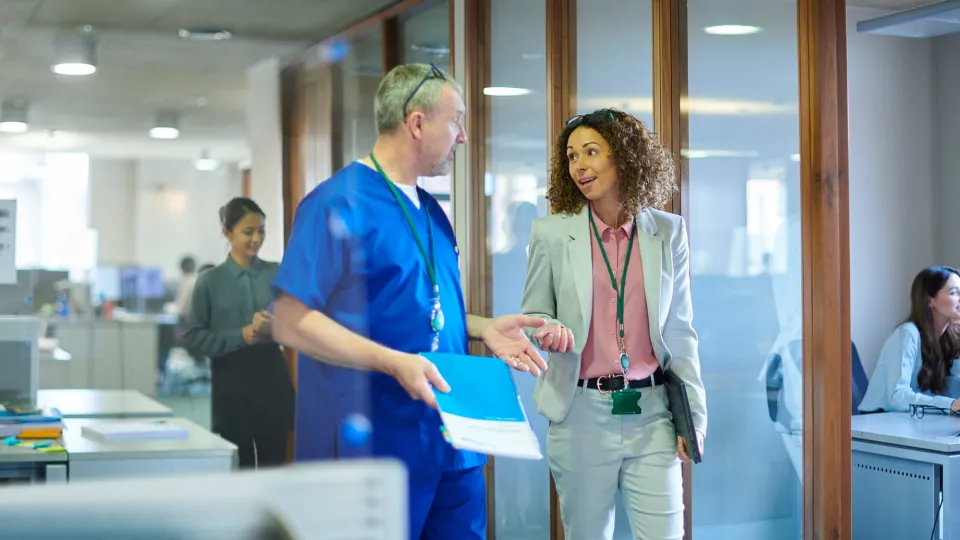Comprehending the Trick Duties and Duties in Medical Administration
Comprehending the Trick Duties and Duties in Medical Administration
Blog Article
Best Practices in Medical Management for Improving Efficiency and Reducing Costs
In the ever-evolving landscape of healthcare, the quest of ideal methods in medical administration is paramount for boosting performance and suppressing expenses. By integrating sophisticated innovations such as digital health and wellness records and telemedicine, doctor can improve operations and enhance client care. Technology alone is not a cure all; maximizing source allotment and promoting collective communication amongst care groups are equally vital. As companies strive to balance high quality and expense, what methods should be focused on to attain these twin goals? The solution to these concerns hold the secret to a much more lasting health care system.
Leveraging Advanced Innovation
The integration of electronic solutions into health care systems has changed the way facilities operate, enhancing procedures and enhancing client care. By centralizing patient info, EHRs eliminate the requirement for difficult paperwork and facilitate smooth interaction amongst healthcare carriers.
Telemedicine is an additional technical advancement that has changed person communication. It offers comfort for both individuals and healthcare professionals by allowing remote consultations, which can minimize the demand for in-person visits and optimize appointment scheduling. In addition, telehealth systems can expand health care access to country or underserved areas, linking gaps in care shipment.
Furthermore, making use of Artificial Intelligence (AI) and device learning is ending up being significantly widespread in anticipating analytics, enabling for very early discovery of prospective wellness concerns and more informed decision-making. These innovations, when integrated properly, can enhance diagnostic accuracy and individualize individual therapy strategies, eventually causing enhanced medical care outcomes and operational effectiveness.
Optimizing Source Allowance
By tactically handling resources such as workers, devices, and financial resources, healthcare facilities can significantly boost their operational efficiency, improve person end results, and lower unneeded expenses. The initial action in optimizing source allowance entails carrying out a thorough evaluation of existing properties and recognizing locations where sources may be underutilized or overextended.
Prioritizing resource appropriation based on patient requirements and solution demands is vital. This entails lining up resources with high-demand areas, such as emergency situation care or specialized therapies, to make sure prompt and effective client care. Implementing flexible staffing designs can additionally maximize labor sources by adjusting employees allocation in feedback to varying individual volumes. In addition, accepting telemedicine and various other technical solutions can alleviate physical source constraints by supplying alternative methods for patient-provider interactions.
Funds should be diligently kept an eye on and designated with calculated foresight to sustain both temporary functional demands and long-term institutional goals. This includes investing in training programs that boost staff proficiencies and taking on energy-efficient techniques that lower functional prices (medical administration). Eventually, a maximized source allotment method fosters a sustainable healthcare setting that is receptive, effective, and monetarily prudent
Streamlining Operations Processes
When healthcare facilities goal to enhance functional efficiency, simplifying workflow procedures comes to be an essential focus. Reliable workflows reduce redundancy, get rid of unneeded steps, and improve coordination amongst healthcare professionals. This strategy not only accelerates solution delivery but also improves the high quality of person treatment.

Next, modern technology combination plays a considerable function in streamlining workflows. Implementing digital wellness documents (EHRs) and computerized medical professional order entry (CPOE) systems reduces documentation, minimizes human mistake, and makes certain information comes to all relevant personnel. Furthermore, leveraging telemedicine systems can enhance client consultations and follow-ups, minimizing the stress on physical infrastructure.

Eventually, structured workflows lead to cost reductions and enhanced patient contentment, promoting a more sustainable medical care environment.
Enhancing Data Administration
Structure upon streamlined workflows, maximizing information management ends my latest blog post up being an essential element beforehand healthcare management. Efficient information management systems are crucial for preserving accurate patient documents, improving decision-making, and ensuring conformity with regulative requirements. By carrying out durable information management options, health care centers can enhance the quality of patient treatment while at the same time decreasing functional costs.
One key element of improving data administration is the assimilation of sophisticated digital health and wellness record (EHR) systems. These systems promote the smooth exchange of patient details throughout different departments, lowering replication of examinations and minimizing errors. A well-designed EHR system supports information analytics, enabling healthcare suppliers to identify fads and make notified choices concerning individual treatment.
Additionally, securing client information is vital. Adopting comprehensive cybersecurity steps, consisting of encryption and normal audits, makes certain the honesty and confidentiality of sensitive details. This not only secures patients yet also keeps the institution's reputation.
Spending in team training is another important element. Educating medical care professionals on information administration methods boosts their capacity to efficiently make use of technology, resulting in boosted client end results. In conclusion, boosting information management via sophisticated modern technology and detailed training is necessary for accomplishing performance and cost decrease in medical management.
Fostering Collaborative Communication
An essential part ahead of time clinical administration is fostering collaborative interaction amongst healthcare specialists. Reliable communication is paramount for making sure seamless individual treatment, enhancing treatment end results, and lessening errors. By urging open discussion and sychronisation across multidisciplinary groups, health care organizations can boost their operational efficiency and reduce unneeded costs.
Central to this method is the integration of interaction technologies such as electronic health and wellness documents (EHRs) and secure messaging systems, which assist in the rapid exchange of critical person details. These tools allow doctor to gain access to and share information in actual time, making certain that all employee are informed and lined up more information in their decision-making procedures. Routine group meetings and interdisciplinary rounds can better advertise a culture straight from the source of collaboration and liability.
Training programs focused on boosting interaction skills are additionally crucial. Eventually, fostering collective communication leads to improved medical care delivery and cost financial savings.

Verdict
Integrating innovative modern technology, such as digital health and wellness records and telemedicine, together with maximized source appropriation and streamlined operations procedures, is essential for enhancing efficiency in medical administration. Reliable information management and fostering joint interaction among health care groups are vital for minimizing redundancies and improving care quality. By focusing on preventive care and taking part in high quality enhancement initiatives, health care organizations can accomplish considerable expense savings and improved person results, consequently making certain sustainable medical care distribution in an increasingly complicated environment.
Report this page